Navigating the complexities of international trade requires a deep understanding of logistics, particularly when it comes to sea freight between China and Kenya. As two countries with burgeoning economic ties, the significance of sea freight cannot be overstated. It serves as a vital conduit for transporting a wide array of goods, ranging from machinery and electronics to textiles, all while providing substantial cost savings compared to air transport.This guide aims to equip you with comprehensive insights into the sea freight landscape, empowering you to make informed decisions for your import needs.
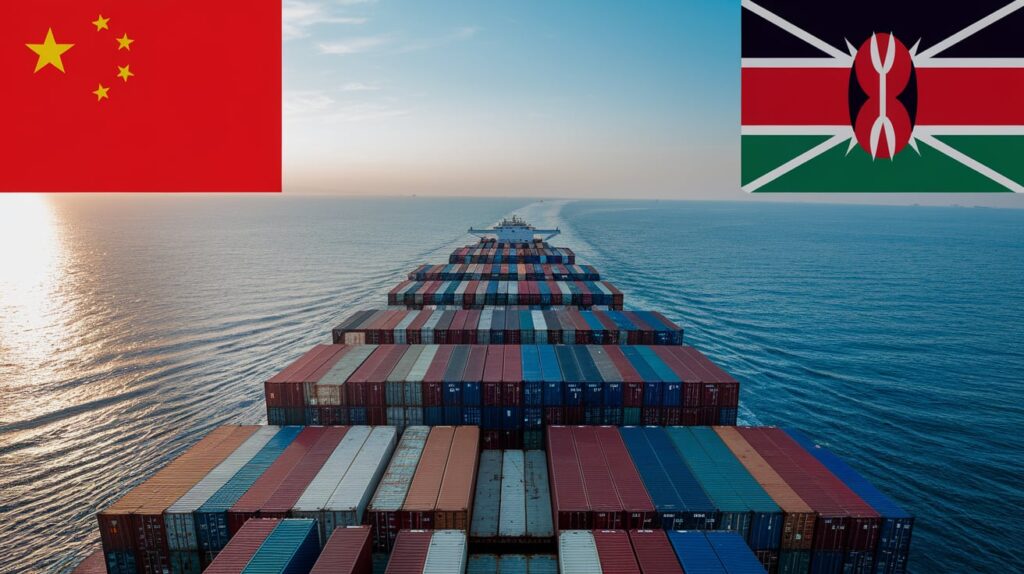
Introduction to Sea Freight from China to Kenya
The sea freight sector plays a pivotal role in facilitating trade between China and Kenya, two nations bound by increasingly strong economic ties. The significance of sea freight stems from its ability to transport large volumes of goods efficiently and cost-effectively, serving as the backbone of international trade. For businesses in Kenya looking to import goods, leveraging sea freight can yield substantial cost savings compared to air transport, especially for bulky and heavy items.
When considering options for shipping, it is essential for businesses to understand the various sea freight services available. These include Less than Container Load (LCL) and Full Container Load (FCL) shipping, each offering unique advantages according to the nature and scale of the shipment. Companies can benefit from the flexibility that these options provide, allowing them to choose a solution that aligns with their logistics needs and budget constraints.
Importance of Sea Freight in China-Kenya Trade
The trade relationship between China and Kenya has expanded significantly in recent years, driven by increased demand for manufactured goods, electronics, and textiles from China. Sea freight serves as a crucial mechanism for moving these goods across the Indian Ocean, providing a reliable link between the two markets. According to the Kenya National Bureau of Statistics, trade with China has increased, with imports primarily consisting of machinery, electrical equipment, and vehicles.
Moreover, the sea freight industry in Kenya has witnessed advancements in logistics infrastructure, improving the efficiency of port operations. This enhancement is crucial as the Port of Mombasa remains a primary gateway for imports into East Africa, making the choice of the right freight forwarding partner vital for successful logistics management.
Overview of Sea Freight Options and Benefits
Choosing the right sea freight option has profound implications for businesses. The two primary options, LCL and FCL, cater to different needs and come with distinct benefits. Understanding these options helps businesses optimize shipping costs while ensuring timely delivery of goods.
-
Cost Efficiency: Sea freight is generally more economical for large shipments, making it an attractive choice for businesses looking to manage their logistics costs effectively.
-
Capacity for Bulk Cargo: Sea vessels can accommodate a wide range of goods, including oversized or heavy items, which might not be feasible through air freight.
-
Environmental Impact: Shipping by sea is often viewed as a more sustainable option compared to air freight, aligning with global efforts to reduce carbon footprints.
READ MORE:
- Shipping From China To Algeria
- Shipping From China To Angola
- Shipping From China To Morocco
- Shipping From China To Nigeria
- Shipping From China To Kenya
- Shipping From China To Tanzania
- Shipping From China To South Africa
Understanding Sea Freight Options
Less than Container Load (LCL) Shipping
Less than Container Load (LCL) shipping is a freight service that allows multiple shipments from different customers to share the same shipping container. This option is particularly advantageous for businesses that do not have enough cargo to fill an entire container but still wish to benefit from the cost advantages of sea freight.
Definition and Advantages of LCL
LCL shipping enables businesses to import smaller quantities of goods without incurring the higher costs associated with renting an entire container. It allows for:
-
Cost-Effectiveness: By sharing space in a container, businesses can save significantly on shipping costs compared to FCL.
-
Flexibility: LCL is ideal for businesses that have fluctuating inventory needs, allowing them to ship smaller orders more frequently.
-
Reduced Risk: Smaller shipments are less vulnerable to loss compared to larger bulk shipments, making LCL a safer option for businesses.
Ideal Use Cases for LCL
LCL is particularly well-suited for:
- Startups or small businesses needing to test new products in smaller quantities.
- Companies importing specialized goods that do not require large volumes.
- Businesses looking to manage cash flow by importing less frequently but at a lower overall cost.
Full Container Load (FCL) Shipping
Full Container Load (FCL) shipping refers to the process where a single shipper uses an entire container for their goods. This option is typically preferred for larger shipments, providing businesses with complete control over the cargo.
Definition and Advantages of FCL
FCL shipping is characterized by the following benefits:
-
Lower Per-Unit Cost: Although the initial investment may be higher, the per-unit cost decreases with increased volume, making it economical for large shipments.
-
Quicker Transit Times: FCL shipments often experience faster processing times at ports, as they do not require consolidation with other shipments.
-
Enhanced Security: With a dedicated container, the risk of damage or loss due to handling multiple cargo is minimized.
Ideal Use Cases for FCL
FCL is ideal for:
- Businesses with consistent demand for large quantities of products.
- Importers of bulky items, such as machinery or equipment, that require an entire container.
- Companies that prioritize reduced transit times and direct shipping routes to maintain inventory levels.
In navigating the complexities of sea freight, partnering with a reputable freight forwarder like Dantful International Logistics can provide the needed expertise. Dantful offers specialized services tailored to both LCL and FCL shipping, ensuring that businesses can efficiently manage their supply chains while minimizing costs. With a focus on providing cost-effective and high-quality logistics solutions, Dantful stands ready to support your import needs from China to Kenya and beyond.
Comparing LCL and FCL Shipping Costs
When deciding between Less than Container Load (LCL) and Full Container Load (FCL) shipping, understanding the cost implications is crucial. Both options come with unique cost structures influenced by various factors, which can impact the overall shipping budget.
Cost Factors for LCL and FCL
Several cost factors differentiate LCL and FCL shipping, including:
-
Volume of Cargo: LCL shipping costs are typically calculated per cubic meter (CBM) or based on weight, while FCL costs are set per container, regardless of the weight or volume.
-
Handling Fees: LCL shipments incur additional handling charges due to the need for consolidation and deconsolidation of multiple shipments within a single container, whereas FCL shipments benefit from a more straightforward process with fewer handling fees.
-
Port and Customs Fees: The fees associated with customs clearance may vary between LCL and FCL. LCL shipments may have higher customs fees due to the complexity of processing multiple shippers’ cargo, while FCL shipments are often simpler.
-
Insurance Costs: Insurance rates can differ depending on the value and type of goods shipped. LCL shipments tend to have higher insurance premiums per unit value since they are more susceptible to damage during loading and unloading.
Average Rates for LCL and FCL from China to Kenya
The average rates for LCL and FCL shipping can vary based on current market conditions, the specific shipping route, and the time of year. Below is a comparative table illustrating typical costs associated with both options for shipments from China to Kenya.
| Shipping Method | Average Cost (USD)* | Container Size (if applicable) | Ideal For |
|---|---|---|---|
| LCL | $100 – $300 per CBM | N/A | Smaller shipments or mixed cargo |
| FCL | $1,200 – $2,500 | 20ft/40ft container | Large shipments or full container loads |
*Note: Rates can fluctuate based on various factors including fuel prices, demand, and specific logistics providers. For the most accurate rates, it’s recommended to consult with a freight forwarder like Dantful International Logistics.
You may be interested in the following related articles:
- Step-by-Step Guide to Sea Freight From China to Thailand
- The Ultimate Guide to Container Shipping Costs from China to New Zealand in 2024
- Step-by-Step Guide to Sea Freight From China to Poland
- Ultimate Guide to Find the Cheapest Shipping Companies from China to Ireland
- Exploring the Benefits of Sea Freight from China to Switzerland
- The Ultimate Guide to Sea Freight from China to Finland
Typical Transit Times for Sea Freight
Understanding the typical transit times associated with LCL and FCL shipping options is essential for effective logistics planning. Here, we break down the average transit times for both methods, as well as the factors that might influence these durations.
Average Transit Times for LCL and FCL
The transit times for LCL and FCL shipments can vary based on several logistical elements, including port operations and customs clearance. Below is a table that compares the average transit times for LCL and FCL shipping from China to Kenya.
| Shipping Method | Average Transit Time (Days) | Ideal For |
|---|---|---|
| LCL | 25 – 40 | Smaller shipments needing flexibility |
| FCL | 20 – 30 | Large shipments requiring faster delivery |
Factors Affecting Transit Times
Various elements can influence the transit times for both LCL and FCL shipping:
-
Port Congestion: Busy ports may cause delays in loading and unloading, impacting overall shipping times. The Port of Mombasa, for instance, may experience peak times that extend transit durations.
-
Customs Clearance: The complexity of customs processes, including documentation and inspections, can add delays, particularly for LCL shipments that involve multiple shippers.
-
Weather Conditions: Adverse weather can impact shipping routes and schedules, potentially leading to delays in cargo arrival.
-
Shipping Routes: The chosen shipping route can also affect transit times. Direct routes generally result in faster deliveries compared to indirect or less frequently serviced routes.
For precise and reliable shipping options tailored to your business needs, it’s advisable to partner with a professional freight forwarder like Dantful International Logistics. They offer comprehensive services that streamline both LCL and FCL shipping, ensuring your goods reach Kenya efficiently and effectively.
Major Chinese Ports for Exports to Kenya
China is home to several major ports that serve as significant gateways for sea freight to Kenya. Understanding these ports is crucial for businesses looking to optimize their shipping routes and logistics. Below is an overview of key ports in China that facilitate exports to Kenya, along with their advantages.
Key Ports in China for Sea Freight to Kenya
- Shanghai Port
- Overview: As one of the busiest ports globally, Shanghai Port handles a vast majority of China’s exports. It is strategically located at the Yangtze River Delta, making it a pivotal hub for both domestic and international trade.
- Shenzhen Port
- Overview: Shenzhen is renowned for its rapid development and proximity to Hong Kong. The port efficiently handles a significant volume of electronic goods and manufactured products destined for international markets, including Kenya.
- Ningbo-Zhoushan Port
- Overview: This port is recognized for its deep-water capabilities and extensive container handling facilities. It ranks among the top ports in China for cargo throughput and is known for its efficient logistics solutions.
- Guangzhou Port
- Overview: Located in southern China, Guangzhou Port is a vital trade gateway for goods heading to Africa. It is well-equipped to handle bulk cargo and containers, making it suitable for various types of shipments.
- Tianjin Port
- Overview: Serving the northern region of China, Tianjin Port is a key transshipment hub that supports trade with numerous international markets, including those in East Africa.
Advantages of Each Port
| Port | Advantages |
|---|---|
| Shanghai Port | – Extensive shipping routes with numerous carriers<br>- Advanced logistics and customs facilities<br>- High efficiency in container handling |
| Shenzhen Port | – Proximity to Hong Kong enhances connectivity<br>- Strong focus on electronic and tech goods<br>- Fast processing times for exports |
| Ningbo-Zhoushan Port | – Deep-water capabilities allow for larger vessels<br>- Efficient cargo handling increases throughput<br>- Comprehensive logistics services |
| Guangzhou Port | – Strong infrastructure for bulk and container cargo<br>- Established trade relationships in Africa<br>- Proximity to manufacturing hubs |
| Tianjin Port | – Serves the northern markets in China<br>- Diverse shipping options available<br>- Robust infrastructure supports various cargo types |
Kenya Ports for Receiving Sea Freight
Kenya is strategically positioned on the eastern coast of Africa and hosts several key ports that are essential for the importation of goods from China and other parts of the world. Understanding these ports helps businesses navigate their logistics more effectively.
Main Ports in Kenya for Receiving Goods
- Port of Mombasa
- Overview: As the largest and busiest port in East Africa, the Port of Mombasa handles the majority of Kenya’s imports. It serves as a transit hub for landlocked neighboring countries such as Uganda and Rwanda.
- Port of Kisumu
- Overview: Located on the shores of Lake Victoria, the Port of Kisumu serves as a critical entry point for goods destined for western Kenya and neighboring countries like Uganda and Tanzania.
- Port of Lamu
- Overview: Lamu Port is part of the Lamu Port-South Sudan-Ethiopia Transport (LAPSSET) corridor project, aimed at improving trade links. It is emerging as an alternative port for the region.
Port Infrastructure and Handling Capabilities
| Port | Infrastructure and Handling Capabilities |
|---|---|
| Port of Mombasa | – Advanced container terminal facilities<br>- Extensive customs and clearance services<br>- Capable of handling large volumes of cargo efficiently |
| Port of Kisumu | – Lake port with specialized handling for bulk cargo<br>- Offers connections to rail and road networks<br>- Increasing capacity for container handling |
| Port of Lamu | – New port development with modern facilities<br>- Aims to accommodate larger vessels in the future<br>- Integrated with LAPSSET corridor for improved logistics |
The choice of port significantly impacts the efficiency and cost-effectiveness of the supply chain. Businesses can benefit from the advanced infrastructure and handling capabilities of these ports, ensuring timely and secure delivery of goods. Partnering with a proficient freight forwarder, such as Dantful International Logistics, can further enhance the logistics experience, providing tailored solutions to meet import needs from China to Kenya.
Preparing Your Shipment for Sea Freight
Successfully preparing your shipment for sea freight involves ensuring that all necessary documentation is complete and that your goods are packaged and labeled appropriately. This process not only helps streamline logistics but also ensures compliance with international shipping regulations.
Essential Documentation
Proper documentation is pivotal when shipping goods internationally. Here are some key documents required for sea freight:
-
Commercial Invoice: This document serves as the primary record of the transaction between the buyer and seller. It details the goods being shipped, their value, and the terms of sale. The commercial invoice is crucial for customs clearance and calculating duties and taxes.
-
Packing List: A packing list provides a detailed breakdown of the contents of the shipment, including quantities, dimensions, and weight. This document is essential for both the shipper and the consignee to verify that the correct items have been shipped and received.
-
Bill of Lading (B/L): The bill of lading is a legal document issued by the carrier, detailing the type, quantity, and destination of the goods being transported. It acts as a receipt for the shipment and a contract between the shipper and the carrier.
-
Certificate of Origin: This document certifies that the goods being exported are of a specific origin. It may be required by the importing country for tariff purposes.
-
Insurance Certificate: An insurance certificate provides proof of coverage for potential losses or damages that may occur during transit. This is crucial for safeguarding the shipment against unforeseen circumstances.
Packaging and Labeling
Effective packaging and labeling are fundamental to ensuring that goods arrive safely and without delays.
Packaging Guidelines for Sea Freight
-
Durability: Use strong and durable packaging materials to withstand the rigors of sea transport. Double-walled cardboard boxes and wooden crates are common choices.
-
Protection: Ensure adequate cushioning and protection for fragile items. Use padding materials such as bubble wrap, foam, or packing peanuts to prevent damage during transit.
-
Weight Distribution: Evenly distribute the weight within the packaging to avoid shifting during transport, which could lead to damage.
-
Moisture Resistance: Consider using moisture-resistant packaging materials, especially for goods that may be sensitive to humidity or water exposure during transit.
Proper Labeling for Customs Clearance
-
Clear Identification: Each package should have clear labels including the consignee’s name, address, and contact information.
-
Content Declaration: Label packages with a brief description of the contents, including relevant HS codes, to facilitate customs processing.
-
Handling Instructions: If necessary, include handling instructions (e.g., “Fragile,” “Keep Dry”) to ensure careful handling during transit.
Navigating Customs Clearance
Understanding customs procedures is critical to ensuring the smooth flow of goods across borders. Both China and Kenya have specific customs regulations that importers must comply with.
Understanding Customs Procedures in China and Kenya
-
China: The Chinese customs system requires exporters to submit various documents, including the commercial invoice, packing list, and bill of lading. Customs inspections may occur, particularly for sensitive items, and duties are assessed based on the declared value of the goods.
-
Kenya: Customs clearance in Kenya involves the submission of documents to the Kenya Revenue Authority (KRA). Importers must present the commercial invoice, packing list, bill of lading, and any required permits or certificates. Goods may be subject to inspection before clearance, depending on the nature of the goods.
Tips for Smooth Customs Clearance
-
Complete Documentation: Ensure that all necessary documentation is complete and accurate to avoid delays.
-
Understand Tariffs and Duties: Familiarize yourself with applicable tariffs and duties for your goods to avoid unexpected costs.
-
Use a Freight Forwarder: Engage a professional freight forwarder like Dantful International Logistics to navigate customs processes, as they can provide expertise and assistance with documentation.
-
Advance Preparation: Prepare your shipment well in advance of the intended arrival to account for any potential delays in customs processing.
Choosing the Right Sea Freight Forwarder
Selecting the right freight forwarder is crucial for managing your logistics effectively. A reliable partner can simplify the shipping process and help mitigate potential issues.
Qualities of a Reliable Freight Forwarder
-
Experience: A seasoned freight forwarder has a deep understanding of logistical challenges and can provide effective solutions.
-
Industry Knowledge: Knowledge of specific regulations, customs procedures, and shipping routes is essential for smooth operations.
-
Network of Contacts: A good freight forwarder has established relationships with carriers, customs officials, and other stakeholders, which can facilitate quicker resolutions and better rates.
-
Customer Service: Strong communication and responsiveness are key traits, ensuring that clients receive timely updates and support throughout the shipping process.
Questions to Ask When Selecting a Forwarder
- What experience do you have in shipping to Kenya?
- Can you provide references from past clients?
- What is the process for handling customs clearance?
- How do you handle tracking and updates on shipments?
- What additional services do you offer, such as insurance or warehousing?
Why Choose Dantful Logistics
Dantful International Logistics stands out as a highly professional, cost-effective, and high-quality one-stop international logistics service provider for global traders. With a focus on providing tailored solutions, Dantful offers:
- Expertise in sea freight, including LCL and FCL options.
- Comprehensive customs clearance services to streamline the import process.
- Access to a robust network of carriers and agents, ensuring efficient handling and transportation.
- Exceptional customer support, guiding clients through every step of the import journey.
By partnering with Dantful, businesses can trust that their logistics needs are in skilled hands, allowing them to concentrate on growth and success in their respective markets.
Dantful International Logistics Services:
- Dantful Ocean Freight Services
- Air Freight From China
- Amazon FBA Freight Forwarding
- WAREHOUSE Services
- One-Stop Customs Clearance Solution
- Cargo Insurance Services in China
- DDP Shipping Services By Dantful Logistics
- Out of Gauge Cargo Transportation Shipping Services
FAQs
1. What is sea freight, and why should I choose it for importing goods from China to Kenya?
Sea freight is the transportation of goods via cargo ships over large bodies of water. It is a preferred choice for importing due to its cost-effectiveness for large volumes, capacity to handle bulky items, and lower environmental impact compared to air freight.
2. What are the differences between Less than Container Load (LCL) and Full Container Load (FCL) shipping?
- LCL Shipping: Allows multiple shipments from different customers to share a container, making it ideal for smaller quantities. It is more flexible and cost-effective for businesses that do not have enough cargo to fill an entire container.
- FCL Shipping: A single shipper uses an entire container for their goods, which is economical for large shipments. It generally provides faster transit times and enhanced security for the cargo.
3. What are the typical costs associated with LCL and FCL shipping from China to Kenya?
- LCL: Average costs range from $100 to $300 per cubic meter (CBM).
- FCL: Average costs range from $1,200 to $2,500 depending on the container size (20ft or 40ft).
4. How long does it usually take for sea freight shipments to arrive in Kenya?
Average transit times can vary:
- LCL: 25 to 40 days.
- FCL: 20 to 30 days.
Transit times can be affected by factors such as port congestion, customs clearance processes, and weather conditions.
5. Which major ports in China facilitate sea freight to Kenya?
Key Chinese ports for exports to Kenya include:
- Shanghai Port
- Shenzhen Port
- Ningbo-Zhoushan Port
- Guangzhou Port
- Tianjin Port
These ports are known for their advanced infrastructure and handling capabilities, facilitating efficient shipping operations.
6. What ports in Kenya do I need to know for receiving goods?
The primary ports in Kenya for receiving sea freight include:
- Port of Mombasa: The largest and busiest port in East Africa.
- Port of Kisumu: Serves western Kenya and neighboring countries.
- Port of Lamu: An emerging port that is part of the LAPSSET project.
7. What documentation is required for sea freight shipments?
Key documents include:
- Commercial Invoice
- Packing List
- Bill of Lading (B/L)
- Certificate of Origin
- Insurance Certificate
Proper documentation is vital for customs clearance and smooth logistics operations.
8. How can I ensure smooth customs clearance for my shipments?
To ensure smooth customs clearance:
- Prepare complete and accurate documentation.
- Understand applicable tariffs and duties.
- Consider using a freight forwarder, such as Dantful International Logistics, to navigate customs procedures effectively.

Young Chiu is a seasoned logistics expert with over 15 years of experience in international freight forwarding and supply chain management. As CEO of Dantful International Logistics, Young is dedicated to providing valuable insights and practical advice to businesses navigating the complexities of global shipping.

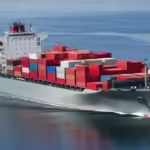
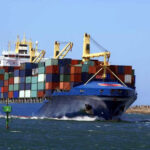
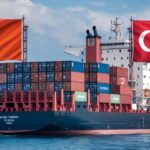
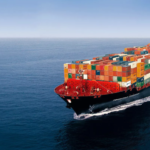
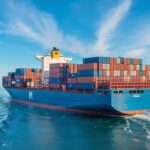
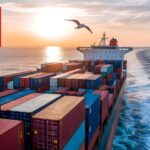
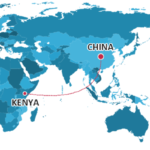
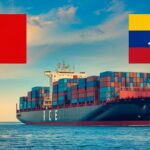
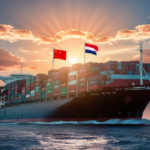
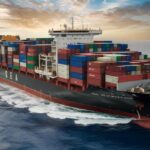
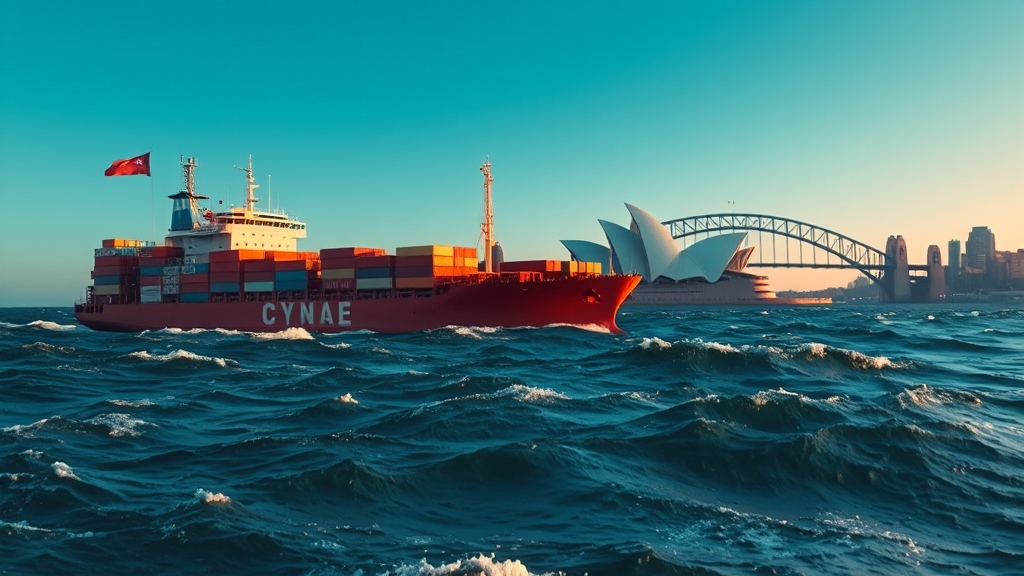
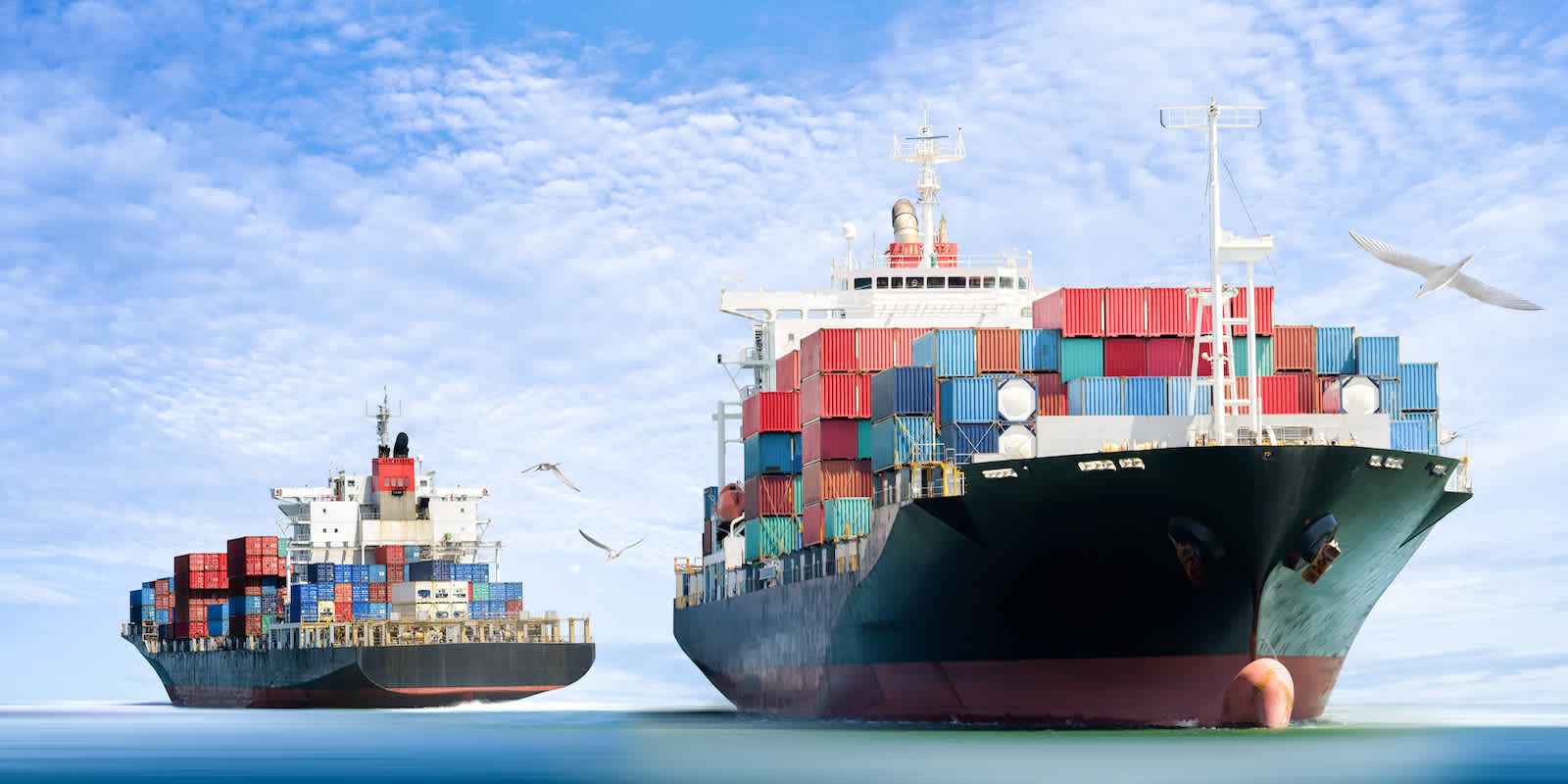
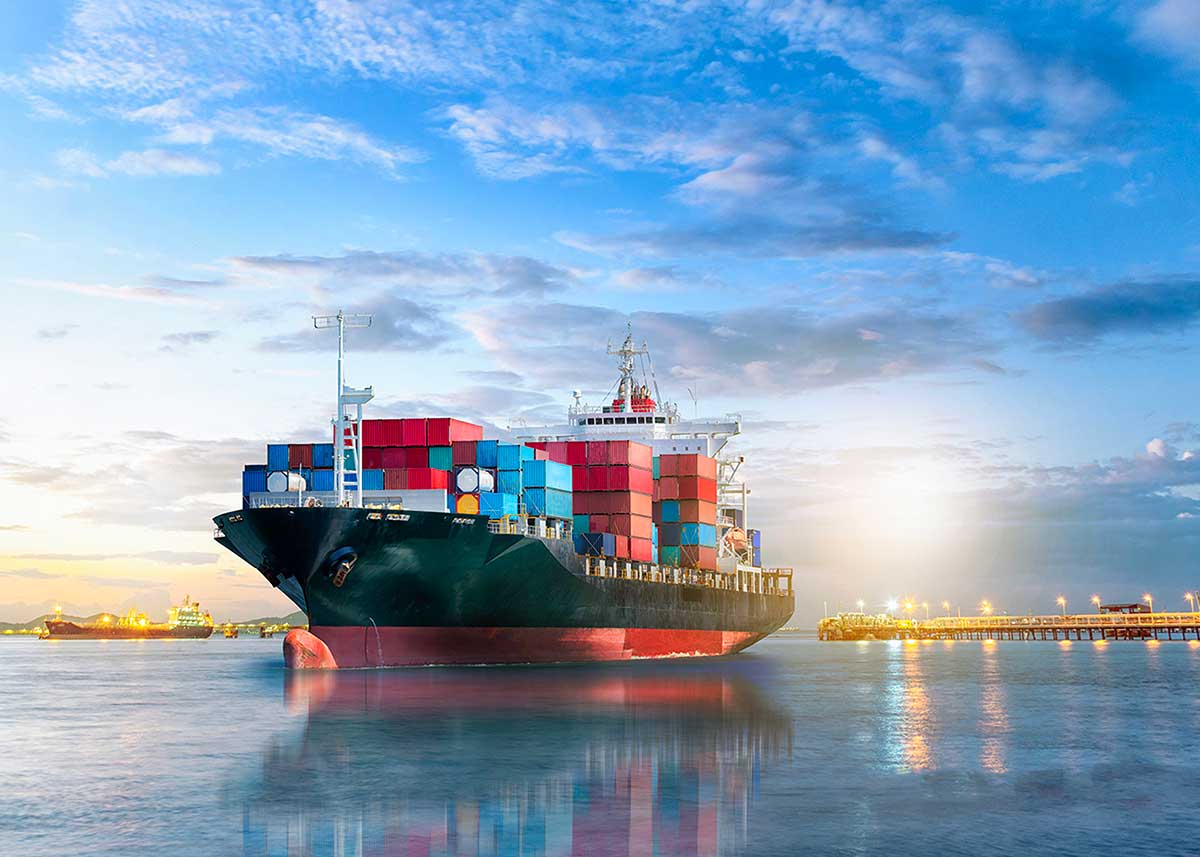
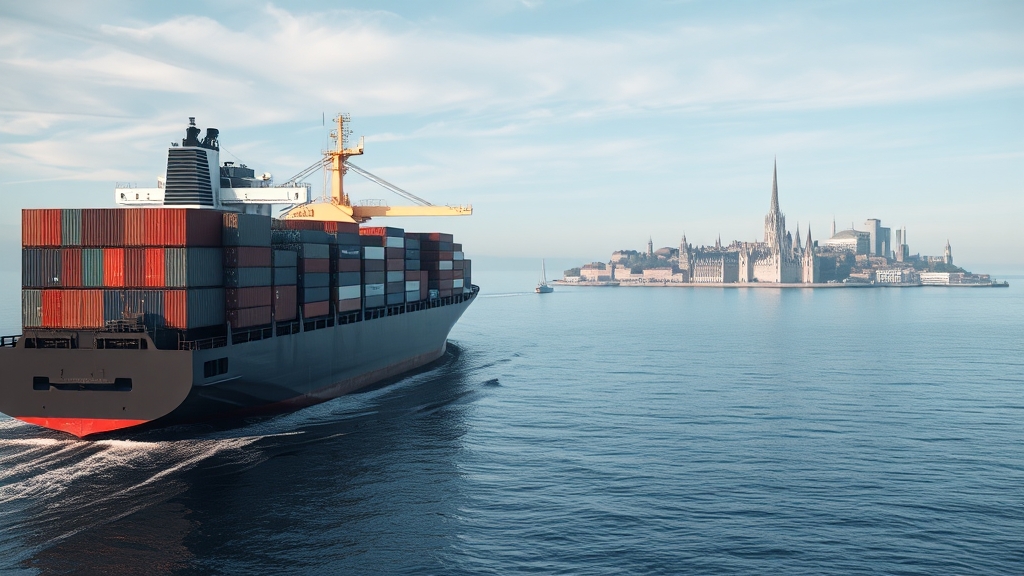
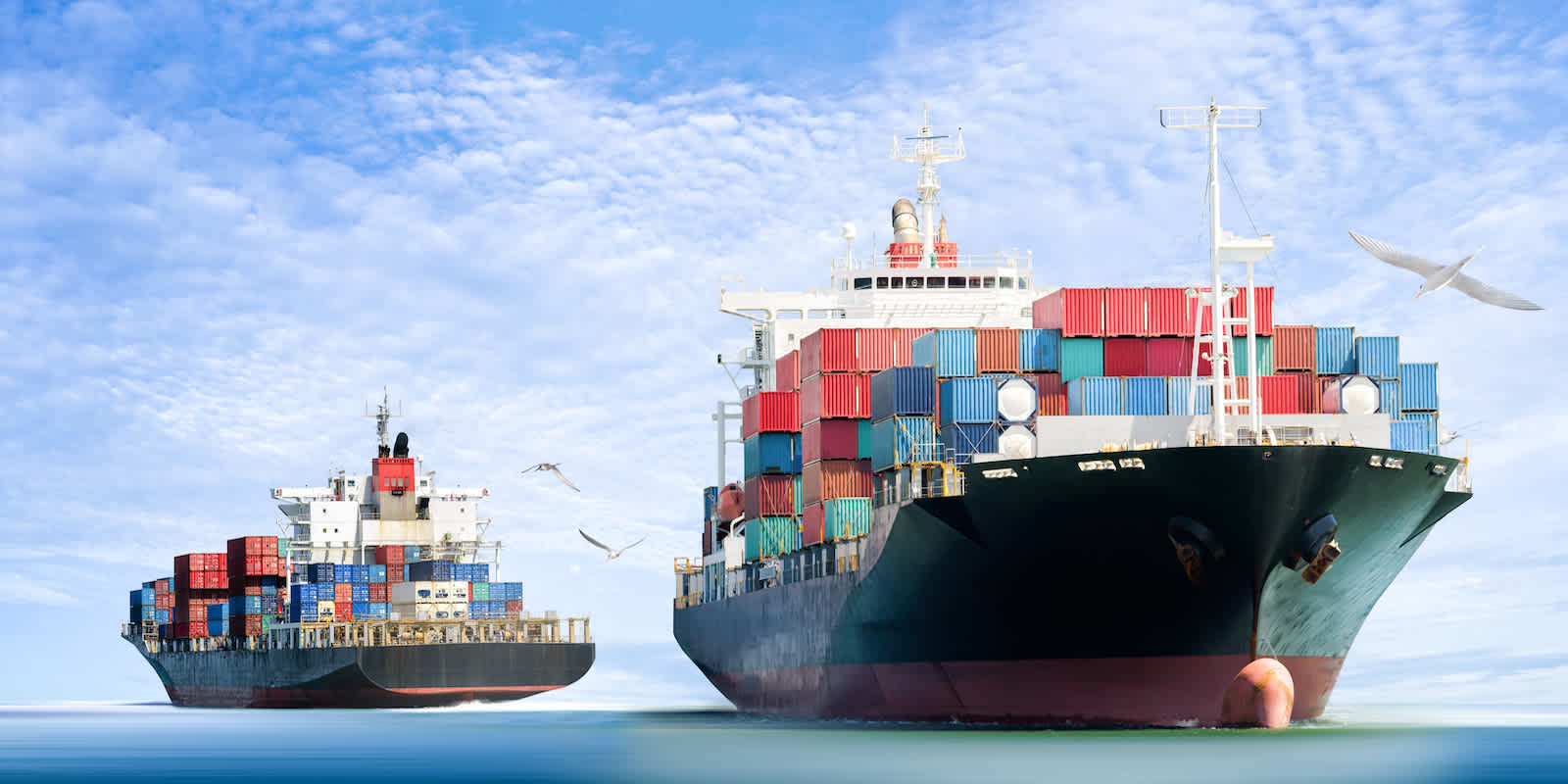





 Afrikaans
Afrikaans Shqip
Shqip አማርኛ
አማርኛ العربية
العربية Հայերեն
Հայերեն Azərbaycan dili
Azərbaycan dili Euskara
Euskara Беларуская мова
Беларуская мова বাংলা
বাংলা Bosanski
Bosanski Български
Български Català
Català Cebuano
Cebuano Chichewa
Chichewa 简体中文
简体中文 繁體中文
繁體中文 Corsu
Corsu Hrvatski
Hrvatski Čeština
Čeština Dansk
Dansk Nederlands
Nederlands English
English Esperanto
Esperanto Eesti
Eesti Filipino
Filipino Suomi
Suomi Français
Français Galego
Galego ქართული
ქართული Deutsch
Deutsch Ελληνικά
Ελληνικά Kreyol ayisyen
Kreyol ayisyen Harshen Hausa
Harshen Hausa Ōlelo Hawaiʻi
Ōlelo Hawaiʻi עִבְרִית
עִבְרִית हिन्दी
हिन्दी Hmong
Hmong Magyar
Magyar Íslenska
Íslenska Igbo
Igbo Bahasa Indonesia
Bahasa Indonesia Gaeilge
Gaeilge Italiano
Italiano 日本語
日本語 Basa Jawa
Basa Jawa ಕನ್ನಡ
ಕನ್ನಡ Қазақ тілі
Қазақ тілі ភាសាខ្មែរ
ភាសាខ្មែរ 한국어
한국어 كوردی
كوردی Кыргызча
Кыргызча ພາສາລາວ
ພາສາລາວ Latin
Latin Latviešu valoda
Latviešu valoda Lietuvių kalba
Lietuvių kalba Lëtzebuergesch
Lëtzebuergesch Македонски јазик
Македонски јазик Malagasy
Malagasy Bahasa Melayu
Bahasa Melayu മലയാളം
മലയാളം Maltese
Maltese Te Reo Māori
Te Reo Māori मराठी
मराठी Монгол
Монгол ဗမာစာ
ဗမာစာ नेपाली
नेपाली Norsk bokmål
Norsk bokmål پښتو
پښتو فارسی
فارسی Polski
Polski Português
Português ਪੰਜਾਬੀ
ਪੰਜਾਬੀ Română
Română Русский
Русский Samoan
Samoan Gàidhlig
Gàidhlig Српски језик
Српски језик Sesotho
Sesotho Shona
Shona سنڌي
سنڌي සිංහල
සිංහල Slovenčina
Slovenčina Slovenščina
Slovenščina Afsoomaali
Afsoomaali Español
Español Basa Sunda
Basa Sunda Kiswahili
Kiswahili Svenska
Svenska Тоҷикӣ
Тоҷикӣ தமிழ்
தமிழ் తెలుగు
తెలుగు ไทย
ไทย Türkçe
Türkçe Українська
Українська اردو
اردو O‘zbekcha
O‘zbekcha Tiếng Việt
Tiếng Việt Cymraeg
Cymraeg יידיש
יידיש Yorùbá
Yorùbá Zulu
Zulu